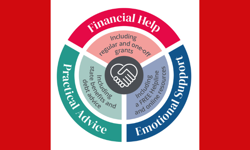In the fight for micropayments, we are at about Round 2 (of 15). Some commentators have written micropayments off as impractical, unworkable and uneconomic. Most if not all micropayment systems in the past may have been that, but those in the future will work: there is too much at stake for them not to.
It’s been very fashionable to bash micropayments as failed technology – something that has been proven not to work. The fact is that there are plenty of micropayment systems that work very well already and the likelihood is that we will see more of them in the future. The big question is, ‘Can we use micropayment systems to make money out of publishing?’ The answer is, ‘Yes, certainly, in some circumstances.’
The subject of micropayments is not new. Geeks have been talking about systems for collecting small payments (typically less than US$1, or any payments that are too small to be economically processed by credit cards) since at least the 1970s – ie well before the internet. A number of companies have been started over the years to sell micropayment systems – and practically all of them have failed. However, a few companies are now successfully using micropayments in some form or another.
In-game micropayments
A variety of games use micropayments to allow players to upgrade their game experience, through buying add-ons (armour, bigger guns, faster cars etc). The player can buy a chunk of in-game virtual money (‘microcurrency’) in advance through a larger (economic) real-world purchase (almost always through a credit or debit card): the exchange rate between the real world and the virtual world allowing in-game purchases to be microscopically small and still economic. Larger purchases of microcurrency in the real world may lead to more favourable exchange rates.
Real-world micropayments
Apple’s iTunes sells its product for a range of prices from 99p downwards – but Apple makes it economic for itself to process the payments by aggregating the payments into a weekly bill (calculating that users will buy an economic number of tunes each week) and taking it from your credit card weekly. If you buy a tune a week, you will be cutting Apple’s margins, since it pays processing charges the same as everyone else.
The ubiquitous OysterCard is a micropayment system – and a very successful one at that. Once you have your card, you can stock it in advance with cash at most newsagents, and then pay for your journey by tapping in at the start and tapping out at the end of the journey. Users who don’t pay properly are fined – usually stoically taking it as ‘a fair cop, guv.’
Mobile phones are a phenomenally successful micropayment system, using either prepayment or post-payment systems (pre-pay can be topped up at the supermarket, post office, cash machine or online) and billing you for services down to a penny. Users around the world top-up their mobile-based micropayment accounts routinely, and are used to being billed down to items of a penny. Another solution is to use a second account to store information on microcurrency transactions, which then triggers a payment whenever a target is met.
Err… that’s it
So there you have it – micropayments in a nutshell. Since it’s too expensive to use a credit card to take small payments, you aggregate small payments somehow to make them economic. You either get the cash from the punters before they make the purchases (cash at the newsagents, prepayments on your debit card), or you get it from them after the purchases (credit card or direct debit). So, to those that say, “It’ll never work,” I would counter by saying, “It’s already working and it’s only going to get bigger.”
Problems and solutions
Critics have pointed out the variety of micropayment schemes that have failed, or failed to succeed in a big way. They point out the ‘mental transaction cost’, where punters fail to buy because the value of the transaction is so low that they can’t be bothered to think about the transaction enough to complete it. They point out the cost of handling complaints on failed transactions.
Micropayment schemes are currently successfully underway: they can succeed. Potential users just need to get the details of the scheme right. My point here would be that someone will eventually become the PayPal, Google, Amazon, iTunes, Microsoft or eBay of micropayments – and at that point we will all wonder why we didn’t think of it before.
Micropayments in a few years time
Imagine if you could go onto any newspaper’s or magazine’s website, and buy as much content or as little content as you wished. You would have pre-loaded your account with as much money as you wanted – or set it up to bill you afterwards on your credit card or by direct debit. If you wanted to buy the whole paper (for download onto your computer, Kindle or iBook) you would pay the normal price (whether that is at a higher or lower price than the printed version remains to be seen, since the print version is always going to be static, whereas the digital version will be able to feature movies, music and more). If you wanted only to look at the obituaries, the TV pages and the OpEds, you’d pay a different price. You could set up your preferences beforehand, so that you only download the parts you want. Everything would be clearly priced – 2p for the TV, 3p for the obits etc.
Critically, you might also use a ‘key’ of memorable information (such as your password and username) – to allow you to buy anywhere in cyberspace. If you wanted to go to another publisher’s pages, you would use the same key, and buy what you wanted from there. You’d use the same key to buy from every website in the scheme around the world. Amazon might adopt it for you to buy books; iTunes might accept it for its payments, and Grommets’R’us might accept it on their specialist grommet website, ‘where grommets are so cheap, they’re nearly free.’
So what is stopping us?
No one micropayment provider has yet emerged from the pack to become the front-runner, as Microsoft did in the early days of PC operating systems and as Google, Amazon, iTunes and eBay have done in their business niches (and as Facebook, Bebo and Twitter have done in the social networking space). One or two providers are starting to look quite strong. However, once someone comes up with a nice, simple, secure and sexy micropayment system, a lot of sites will adopt it, and it will become the de facto standard. Microdosh.com anyone?
Behind the Digital Curtain
Commentators have pointed out that we humans are inherently mean, lazy and cunning. If we find something that is not free on the internet, we will go and find it somewhere where it is free. That will continue to be the case – but only for some kinds of content. News has been commoditised for years – many companies are obliged to broadcast their news to all markets simultaneously, to avoid giving some market players an unfair advantage. A lot of today’s ‘news’ is generated by special interest groups and PR companies. That ‘news’ will continue to be widely dispersed – but you wouldn’t want to pay for it.
News that you will be willing to pay for will be exclusive (the Daily Telegraph would have made a mint with its months-long exposé of MPs expenses), compelling (make way for superstar columnists – and paid-for bloggers), accurate (fact-checkers will make a come-back), far-sighted (there will still be a place for foreign correspondents – and for people who can make sense of big stories) and readable (you will not pay for rubish [sic]).
In front of the digital curtain, you will find all the trash that you could ever want (but you may not want to read it). Behind the digital curtain, there will be treasure – but you will have to pay for it.
What will it take to work for publishing?
The publishers cannot get their heads together and agree that they will all make their content paid-for. That would be anti-competitive, and illegal. However, if a de facto micropayments company were to emerge (or even two or three, in the same way that Visa, MasterCard and American Express are commonly accepted together in any one outlet), and publishers were to start to put more and more of their content behind the digital curtain (á la News International), we could start to see the emergence of a viable longer-term business model for digital publishing.
The fight for micropayments
All the business activity in trying to set up micropayments that has gone on before now could be seen as the pre-fight press conference, with a lot of posturing and pouting. What we are going through now seems to be the equivalent of the first round, where the various contenders are sizing each other up for the main contest to come. To the victor will come the spoils – to become the new global micropayment champion that will be at the heart of our digital lifestyles for decades to come.
Ding Ding! Round Two!










